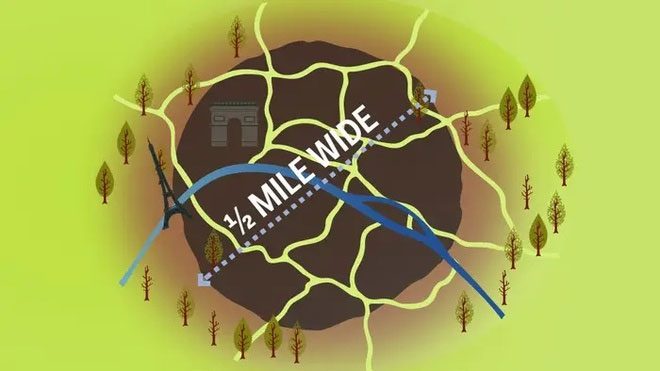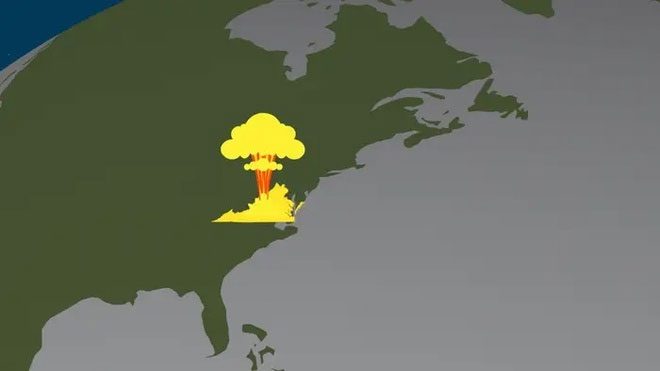A meteorite the size of a house, when it explodes, can unleash a force greater than the atomic bomb dropped on Hiroshima in 1945, leveling most buildings within a radius of nearly 2,500 meters.

Humanity has witnessed many meteorite impacts on Earth, causing varying degrees of damage depending on the size of the meteorite. For instance, the Chelyabinsk meteorite that fell in Russia in 2013 shattered windows and walls of buildings, while the Tunguska event in 1908 flattened an entire city… A few meteorites have the potential to cause global extinction, such as the event that occurred 66 million years ago in the Yucatán Peninsula in Mexico. (Image: Business Insider).

In fact, most meteorites are smaller than a car and burn up in space. However, larger meteorites pose significant risks. Some explode near the Earth’s surface, generating shock waves strong enough to shatter glass. Upon detonation, meteorites can also emit intense light, causing skin burns. (Image: Business Insider).

According to estimates by NASA and the Impact Earth project from Purdue University (USA), a meteorite the size of a house exploding in the atmosphere could unleash a force greater than the atomic bomb dropped on Hiroshima in 1945, leveling most buildings within a radius of nearly 2,500 meters. (Image: Business Insider).

If a meteorite exploded with a size equivalent to a 20-story building, at the right speed and angle of impact, it could devastate an area comparable to that of Paris (about 106 km²). (Image: Business Insider).

Meanwhile, a meteorite the size of a football field (about 7,000 m²) could flatten an area nearly the size of New York City (about 1,200 km²), causing an earthquake of magnitude 7.7 that could be felt over 1,500 km away. (Image: Business Insider).

According to NASA estimates, to cause significant changes to the Earth, a meteorite must have a diameter of over 800 meters. At this size, a meteorite impacting the Earth would destroy an area equivalent to the state of Virginia in the USA (nearly 111 km²). Immediately, debris from the impact would obscure sunlight, leading to rapid climate changes on Earth. (Image: Business Insider).

If a meteorite the size of Mount Everest were to land on Earth, it would create a fireball over 160 km wide, wiping out most life on the planet. (Image: Business Insider).

When an asteroid the size of London (over 1,500 km²) impacts the Earth, it would not only destroy all life but also slow down the Earth’s rotation, making a day longer by nearly half a second. Ceres is the largest known asteroid, about the size of Texas (nearly 700 km²). Fortunately, Ceres is not on a collision course with Earth. (Image: Business Insider).





















































